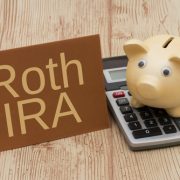What You Need to Know About Self-Directed Roth IRAs
What do you need to know about Self-Directed Roth IRAs? If you’re interested in a more independent way of investing—with the benefits of the Roth IRA—it turns out there can be quite a bit to learn. But we don’t mean that to sound intimidating. Self-Directed Roth IRAs can be some of the most simplified ways to invest money for retirement while enjoying the freedom that comes from self-directing a retirement account. There’s just one little bridge to cross: you’ll need to know a little bit about Self-Directed Roth IRAs if you’re going to leverage them the best way you can. Here are some answers to random questions you might have about Self-Directed Roth IRAs, and what they should tell you about Self-Directed Roth IRA investing.
How Does a Self-Directed Roth IRA Help for Retirement Planning?
Just sitting there, a Roth IRA isn’t going to do much. It’s actually your planning that’s going to be key here. However, it helps to know what a Self-Directed Roth IRA is capable of. It’s an account that offers you the ability to invest post-tax retirement funds towards a wide range of investments and investment asset classes. And that “post-tax” designation is important here. Because it means that you’ll be able to invest money that has already had the taxes paid on it, allowing that money to grow tax-free in an account that might have substantial returns.
For example, some investors have previously put private stock in Roth IRAs. The value of this private stock then took off, reaching incredible heights—netting the investors all sorts of tax-free returns with the Roth IRA. And that’s possible thanks to the act of Self-Directing, which gives investors the options of using assets like private stock within the account.
What Are Some Upsides and Downsides to Self-Directed Roth IRA Investing?
Roth IRA investing has the advantages listed above, which means that investors can use tax-free growth to a substantial degree within their retirement account. The example of using private stock in a company that took off to unprecedented proportions is a great example of just how powerful a Roth IRA can be. However, there are some downsides that you’ll want to weigh as well. For example, investors can only contribute a limited amount to a Roth IRA. This tends to put some limit on what’s possible unless you have assets within an IRA that skyrocket—and that’s not always a guarantee with any type of investment.
How Do You Start a Self-Directed Roth IRA?
If you like the idea of using a powerful tool like a Roth IRA while also using self-direction as your mode of investing, then it may be time for you to seek out the options you have available to you. Starting a Self-Directed Roth IRA is as simple as filling out the paperwork with a Self-Directed IRA administrator. From there, you’ll follow all of the instructions, make sure that you’re set up with the appropriate administrator on the account, and you can then begin issuing buy/sell orders or making contributions to the Roth IRA.
Keep in mind that the administrator is not a personal assistant, nor are they accountants. You’ll want to work with your own team to make sure that you keep track of all of your expenses and other issues as you build this account. The Self-Directed IRA administration firm will then serve as the administrator on the account, carrying out buy/sell orders, and making sure that everything is taken care of when it comes to proper administration on the account.
Interested in learning more about Self-Directed IRAs? Contact American IRA, LLC at 866-7500-IRA (472) for a free consultation. Download our free guides or visit us online at www.AmericanIRA.com.








